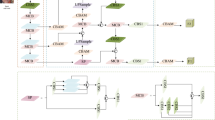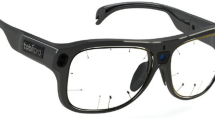Abstract
Driver fatigue is a chief cause of traffic accidents. For this reason, it is essential to develop a monitoring system for drivers’ level of fatigue. In recent years, driver fatigue monitoring technology based on machine vision has become a research hotspot, but most research focuses on driver fatigue detection during the day. This paper presents a night monitoring system for real-time fatigue driving detection, which makes up for the deficiencies of fatigue driving detection technology at night. First, we use infrared imaging to capture a driver’s image at night, and then we design an algorithm to detect the driver’s face. Second, we propose a new eye-detection algorithm that combines a Gabor filter with template matching to locate the position of the corners of the eye, and add an eye-validation process to increase the accuracy of the detection rate. Third, we use a spline function to fit the eyelid curve. After extracting eye fatigue features, we use eye blinking parameters to evaluate fatigue. Our system has been tested on the IMM Face Database, which contains more than 200 faces, as well as in a real-time test. The experimental results show that the system has good accuracy and robustness.












Similar content being viewed by others
References
Author SJJ, Lee SJ, Kim J, Jung HG, Kang RP (2011) Vision-based method for detecting driver drowsiness and distraction in driver monitoring system. Opt Eng 50:127202-127202-24
Bai X, Zhou F, Xue B (2011) Infrared image enhancement through contrast enhancement by using multiscale new top-hat transform. Infrared Phys Technol 54:61–69
Bansode NK, Sinha PK (2013) Efficient eyes detection using fast normalised cross-correlation. Signal Image Process 3
Branchitta F, Diani M, Corsini G, Porta A (2008) Dynamic-range compression and contrast enhancement in infrared imaging systems. Opt Eng 47:076401
Brill JC, Hancock PA, Gilson RD (2003) DRIVER FATIGUE: IS SOMETHING MISSING? driving assessment the second international driving symposium on human factors in driver assessment training & vehicle design 16
Dinges DF, Grace R (1998) Perclos: a valid psychophysiological measure of alertness as assessed by psychomotor vigilance, Tech Brief
Dong Y, Hu Z, Uchimura K, Murayama N (2011) Driver inattention monitoring system for intelligent vehicles: a review. IEEE Trans Intell Transp Syst 12:596–614
Fan X, Sun Y, Yin B, Guo X (2010) Gabor-based dynamic representation for human fatigue monitoring in facial image sequences. Pattern Recogn Lett 31:234–243
Hu C, Xu Z, Liu Y, Mei L (2015) Video structural description technology for the new generation video surveillance systems. Front Comp Sci 9(6):980–989
Ilk HG, Jane O, Ilk O (2011) The effect of Laplacian filter in adaptive unsharp masking for infrared image enhancement. Infrared Phys Technol 54:427–438
Jin L, Niu Q, Jiang Y, Xian H, Qin Y, Xu M (2013) Driver sleepiness detection system based on eye movements variables. Adv Mech Eng 2013:1–7
Jo J, Lee SJ, Kang RP, Kim IJ, Kim J (2014) Detecting driver drowsiness using feature-level fusion and user-specific classification. Expert Syst Appl 41:1139–1152
Khan R, Talha M, Khattak AS, Qasim M (2013) Realization of balanced contrast limited adaptive histogram equalization (B-CLAHE) for adaptive dynamic range compression of real time medical images. p 117–121
Lai R, Yang YT, Wang BJ, Zhou HX (2010) A quantitative measure based infrared image enhancement algorithm using plateau histogram. Opt Commun 283:4283–4288
Liang K, Ma Y, Xie Y, Zhou B, Wang R (2012) A new adaptive contrast enhancement algorithm for infrared images based on double plateaus histogram equalization. Infrared Phys Technol 55:309–315
Lienhart R, Maydt J (2002) An extended set of Haar-like features for rapid object detection[C], International Conference on Image Processing. Proceedings. IEEE, 2002:I-900-I-903 vol. 1
Lin CL (2011) An approach to adaptive infrared image enhancement for long-range surveillance. Infrared Phys Technol 54:84–91
M. Perdersoli, J. Gonzàlez, B. Chakraborty and J.J. Villanueva, Boosting histograms of oriented gradients for human detection, Recercat Home (2012).
Ranney TA, Garrott WR, Goodman MJ (2001) Nhtsa driver distraction research: past, present, and future. Proceedings: International Technical Conference on the Enhanced Safety of Vehicles. 9 p.-9 p
Schleicher R, Galley N, Briest S, Galley L (2008) Blinks and saccades as indicators of fatigue in sleepiness warnings: looking tired? Ergonomics 51:982–1010
Shen Y (2011) Efficient normalized cross correlation calculation method for stereo vision based robot navigation. Front Comp Sci China 5:227–235
Sigari MH, Fathy M, Soryani M (2013) A driver face monitoring system for fatigue and distraction detection. Int J Veh Technol 2013:73–100
Sun D, Watada J (2015) Detecting pedestrians and vehicles in traffic scene based on boosted HOG features and SVM. p 1–4.
Suzuki M, Yamamoto N, Yamamoto O, Nakano T (2006) Measurement of Driver’s Consciousness by Image Processing -A Method for Presuming Driver’s Drowsiness by Eye-Blinks coping with Individual Differences. 4:2891–2896
Vickers VE (1996) Plateau equalization algorithm for real-time display of high-quality infrared imagery. Opt Eng 35:1921–1926
Viola P, Jones M (2001) Rapid object detection using a boosted cascade of simple features. Proc CVPR 1:511
Wang BJ, Liu SQ, Li Q, Zhou HX (2006) A real-time contrast enhancement algorithm for infrared images based on plateau histogram. Infrared Phys Technol 48:77–82
Wang YZ, Zhou LX, Kong WZ (2013) Eye blinking detecting in driving fatigue based on adaboost. J Hangzhou Dianzi Univ
Watanabe T, Ito S, Yokoi K (2010) Co-occurrence histograms of oriented gradients for human detection. IPSJ Trans Comput Vis Appl 2:39–47
Wei SD, Lai SH (2008) Fast template matching based on normalized cross correlation with adaptive multilevel winner update. IEEE Trans Image Process 17:2227–2235
Xu Z, Chen H (2015) The semantic analysis of knowledge map for the traffic violations from the surveillance video big data. Comput Syst Sci Eng 30(5)
Xu Z, Hu C, Mei L (2016) Video structured description technology based intelligence analysis of surveillance videos for public security applications. Multimedia Tools Appl 75(19):12155–12172
Xu Z, Mei L, Hu C, Liu Y (2016) The big data analytics and applications of the surveillance system using video structured description technology. Clust Comput 19(3):1283–1292
Xu Z, Mei L, Liu Y, Hu C, Chen L (2016) Semantic enhanced cloud environment for surveillance data management using video structural description. Computing 98(1–2):35–54
Xu X, Quan C, Ren F (2015) Facial expression recognition based on Gabor Wavelet transform and Histogram of Oriented Gradients
Yadav RP, Kutty K, Ugale SP (2015) Implementation of robust HOG-SVM based pedestrian classification. Int J Comput Appl 114:10–16
Yoo JC, Han TH (2009) Fast normalized cross-correlation. Circuits Syst Signal Process 28:819–843
Zhao J, Chen Y, Feng H, Xu Z, Li Q (2014) Infrared image enhancement through saliency feature analysis based on multi-scale decomposition. Infrared Phys Technol 62:86–93
Zhao W, Xu Z, Zhao J, Zhao F, Han X (2014) Variational infrared image enhancement based on adaptive dual-threshold gradient field equalization. Infrared Phys Technol 66:152–159
Zheng Z, Yang J, Yang L (2005) A robust method for eye features extraction on color image. Pattern Recogn Lett 26:2252–2261
Acknowledgments
This work was partially supported by the National Natural Science Foundation of China (Grant Nos. 51408237, 51108192 and 51208500), the Chinese Postdoctoral Science Foundation (Grant Nos. 2012 M521824 and 2013 T60904), the Public Welfare Research and Capacity Building Project of Guangdong Province (Grant No. B2161520), the 2016 Students’ Research Program (SRP) of the South China University of Technology, and China new energy automobile products testing conditions research and development—Guangzhou traffic condition data collection.
Author information
Authors and Affiliations
Corresponding author
Rights and permissions
About this article
Cite this article
You, F., Li, Yh., Huang, L. et al. Monitoring drivers’ sleepy status at night based on machine vision. Multimed Tools Appl 76, 14869–14886 (2017). https://doi.org/10.1007/s11042-016-4103-x
Received:
Revised:
Accepted:
Published:
Issue Date:
DOI: https://doi.org/10.1007/s11042-016-4103-x




